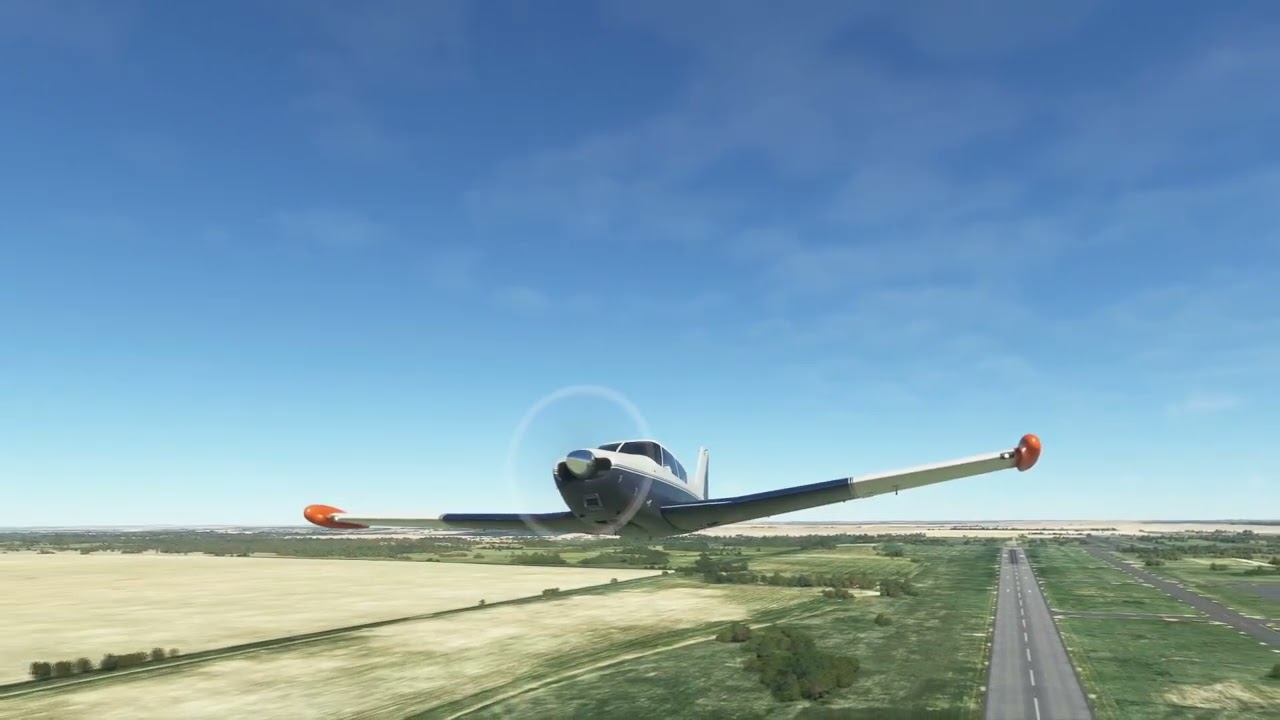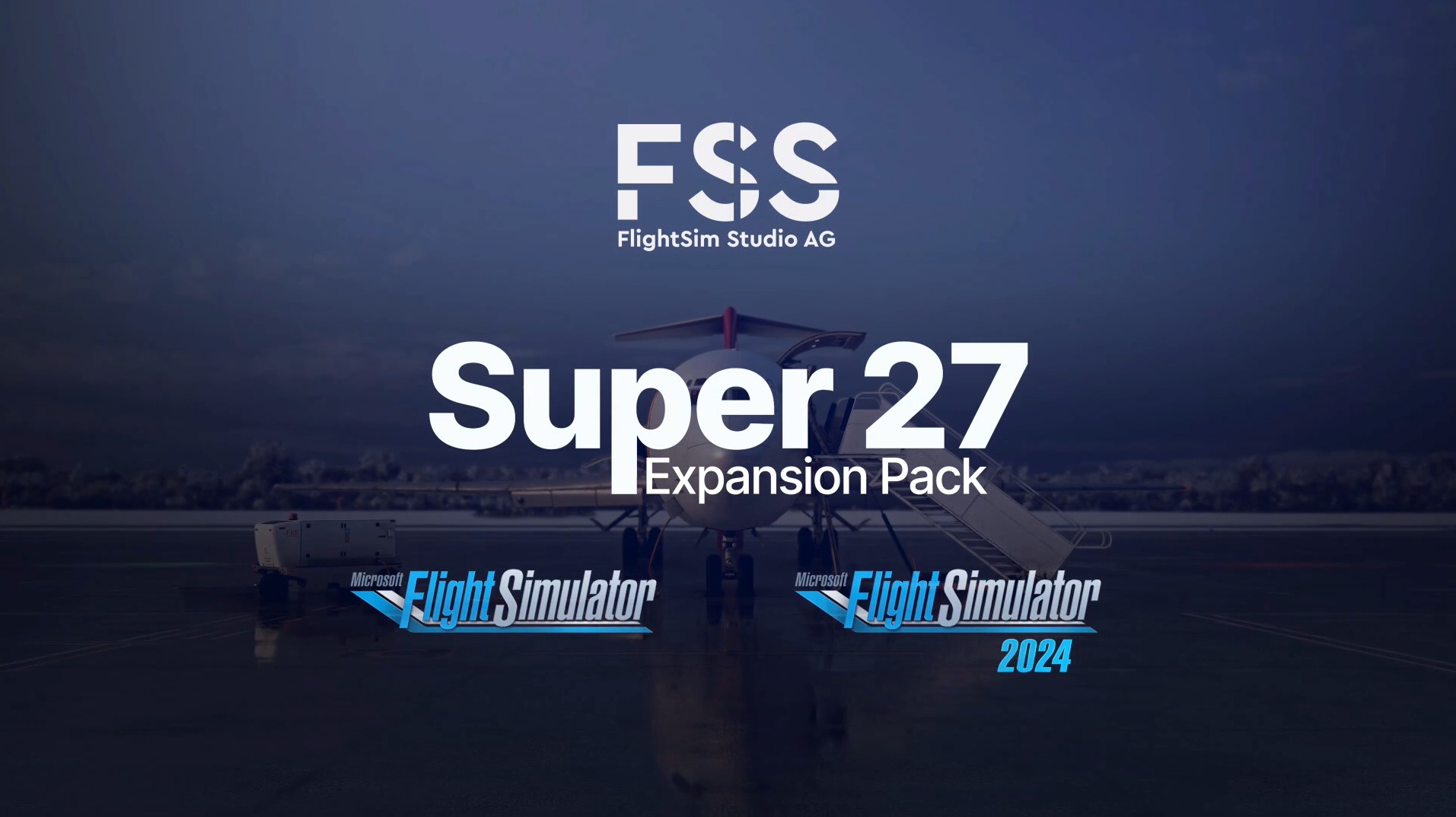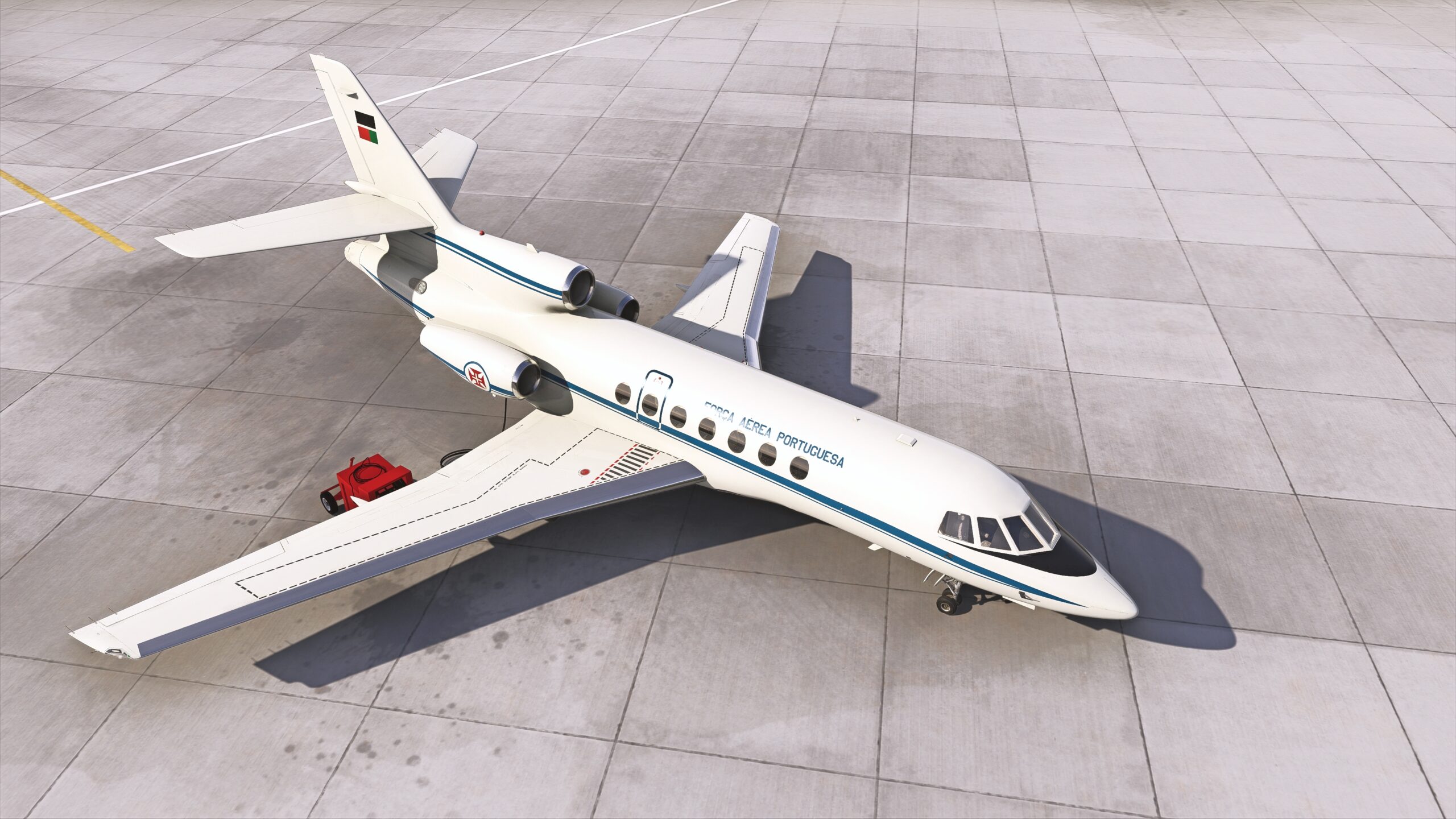It has taken a long time for the A2A Comanche to finally come to Microsoft Flight Simulator. A2A Simulations first announced that it was bringing its highly-regarded Accu-Sim technology to MSFS in July of 2020 – but at the time, it wasn’t the Comanche that was to get the first hurrah in the new sim (the Aerostar 600 was to be the first release, at the time). Finally, though, the PA-24 Comanche 250 has arrived – and boy, has it made a splash.
We are in the midst of a very good year of MSFS releases, with many more right around the corner. In this sim world where so much is excellent, the A2A Comanche still stands alone. True to the Accu-Sim name, it delivers the realest General Aviation simulation currently available in MSFS. In this A2A Comanche 250 review, I will describe how this singular aircraft has become my best friend, occasionally my worst enemy, and above all: a must-fly aircraft.

Review Setup
We all sim with different setups and with varying levels of experience, so as always, the context of my own is very important when describing my experience during this A2A Comanche review. I have been simming seriously since the release of Microsoft Flight Simulator in 2020, and I am currently finishing my U.S. Private Pilot’s License. My sim setup consists of a PC copy of Microsoft Flight Simulator on a computer running a Ryzen 5 5800X3D, NVIDIA RTX 3080, and 64GB of RAM.
I use an ultrawide 32:9 monitor and used the Honeycomb Alpha Yoke and Bravo Throttle Quadrant during this review, as well as a set of Thrustmaster TFRP rudder pedals and a Tobii 5 eye tracker. All currencies mentioned in this review are in $USD. A2A Simulations kindly provided a copy of the Accu-Sim Comanche 250 to FSNews for this review. However, as always, the opinions and conclusions in this review are forever my own.
A Pipe-r Dream
The first PA-24 Comanche 180 rolled out of Piper’s production facilities in 1956, designed to compete with the Beechcraft Bonanza. While the ratio of Bonanzas to Comanches on the ramps around me certainly speaks to Beechcraft’s own success, the Comanche was not itself a failure. With almost 5,000 built, the Comanche in various forms comprised the core of Piper’s lineup until 1972, when a devastating flood destroyed their manufacturing facilities.
Owners and pilots of the Piper Comanche are drawn to its performance and handling characteristics, rugged build, and sleek lines. “It just ‘feels’ right,” says A2A president Scott Gentile of his own Comanche 250: N6229P, the aircraft primarily used as a reference for the Accu-Sim Comanche for MSFS. It’s a 1959 PA-24 Comanche 250 with a Lycoming O-540 engine. It is fitted with many of the improvements Piper first offered in the 1961 model year, including wingtip fuel tanks, increased gross weight, and toe brakes for the pilot.

A2A Comanche Installation and Extras

The A2A Comanche is available for purchase solely from the A2A Simulations website for $49.99, placing it squarely on the high end of GA aircraft pricing in MSFS. It is only compatible with PC. It comes with its own installer, which places the required files into your MSFS Community folder. Installation is painless, as are updates – an updater utility handles changes, and you are notified of new versions via the EFB. Five unique liveries are included, representing real-world Comanches.
Peripheral Compatibility & Manuals
Installed alongside the A2A Comanche is an Input Configurator program that assists with binding some of the harder-to-control inputs in MSFS. For example, MSFS does not have a native axis binding for carburetor heat, but that can be bound to an axis here in the Comanche Input Configurator. It detected all of my peripherals and bound them flawlessly where needed. Not all controls are here – just the ones that could either conflict or have issues with MSFS’ control binding implementation. I also had issues with the autopilot bindings and magneto/starter switch on my Honeycomb Alpha when bound via MSFS, but after a little tinkering in the Input Configurator, I was able to get them to perform as expected.
I did not perform this A2A Comanche review in VR, and A2A makes a point of mentioning that VR-specific controllers are not supported. However, A2A does have a couple of VR-specific options (such as turbulence) in the EFB though, so some thought has obviously been put into VR with the Accu-Sim Comanche. Overall, I had no major issues with setting up all of my peripherals to work with the Comanche, even the Logitech Radio Panel that sometimes has issues recognizing higher-fidelity add-ons.

My only gripe with the Input Configurator is that it is not explained at all in the manual – a brief explanation of how to use it would have saved me some headaches. Other than that, though, the manual is stellar. It is organized in a similar manner to a typical Pilot’s Operating Handbook, making it easy to understand. Checklists are given for normal and emergency operations, as are amplified discussions of these procedures to give the pilot an essential education on how to handle this aircraft. You get a separate manual for the S-TEC-30 autopilot (the actual operating manual, no less), which you must read to use the autopilot effectively as it has some quirks and functions that are not readily apparent if you’re used to, for example, the KAP140 or Garmin autopilots in most MSFS aircraft.
EFB and Configuration Options
The tablet/EFB of the A2A Comanche has been assembled with an extreme amount of care and attention to what you as the pilot would want. No, there’s no Simbrief import or moving map – but this is a piston single, you don’t need that anyway. What you do need are comprehensive, interactive checklists, weight & balance adjustments, instantaneous weather information, configuration options, and more. It can be repositioned almost anywhere in the cockpit of the Accu-Sim Comanche just by dragging.





The EFB also includes an excellent pushback function. In General Aviation, you are the pushback tug, and the A2A Comanche lets you grab the towbar and use your flight controls to push and pull the aircraft wherever you need it to go. The EFB offers controls and settings for every aspect of the aircraft, including the walkaround and maintenance options – which we will cover in so much more detail later.
Configuration options for the A2A Comanche are extensive and saved persistently per-livery. You have the usual GPS stack options (Basic radios, Working Title G430/530 units, and GTN750 integration if you own those add-ons), as well as hardware options such as wing fairings, stabilator tips, and more. Ground equipment includes chocks, tie-downs and covers, an engine heater, and maintenance jacks.

Ownership Simulator 2023
When we as simmers select a GA aircraft to fly, we often pick the one that looks coolest, sounds the nicest, or one that we’ve flown or seen in real life. We never need to choose an aircraft to fly based on what it is like to own. The depth of A2A’s Accu-Sim engine means that every tail number of the A2A Comanche can be unique, with its own special features. I set every one of the separate Comanches I flew during the review period to “Used” or “Auction” via the EFB, putting them all in different states of wear and tear, all saved persistently by livery.

While other add-ons have simulated ownership in various ways, the A2A Comanche does the best of any add-on I own in that aspect of making an airplane feel like it’s yours. As an example, my chosen trainer aircraft (a 2007 Cessna 172S) at my flight school is supposedly identical to every other 2007 Cessna 172S in their fleet – but it’s not. Every airframe has its quirks, every engine runs a little bit differently, and every aircraft feels special in its own right.
This is the aspect of ownership that the A2A Comanche just flat-out nails. No two tail numbers fly exactly the same, and in my “fleet,” I certainly have one that I especially like. I’ve gotten to know it just as well as my flight school’s plane and its quirks have become features, homely and comforting. I know that it likes to sip oil, so after a few hours, I expect a top-up. I know that cylinder 2 tends to run a little hot, and I know how to keep it under control and performing well.

The pre-flight walkaround feature is implemented extremely well. The A2A Comanche’s simulation of wear & tear is so deep that there are issues that you can only detect in the walkaround (or cheat by inspecting via the EFB). During one review flight, I had an aileron that needed servicing, and I detected it during the pre-flight inspection by moving the control surface and hearing it squeak and grind. One time someone left a rag in the engine cowling – good thingI caught it before taking off! I only wish that the wear and tear could be reflected visually in increasing levels of dirt and grime on the external surfaces of the aircraft, as some other add-ons do. That would make the aircraft feel even more personal over the course of your time with it.
Textures and Modeling
At this point, it is hard to impress visually in Microsoft Flight Simulator. The bar has been set so high by so many add-ons, but the A2A Comanche manages to share the throne with the very best. Excellent material textures and thoughtful details effectively capture the magic of an old, rugged aircraft such as the PA-24-250.
I’ll make this section of the review brief, and let the images do the talking. I was consistently impressed by the visual package on offer in my A2A Comanche review. In particular, they consistently nailed the material texturing. The aluminum skin of the aircraft has that dull shine that looks identical to most real-world GA aircraft: Well-cared-for, but not fresh – dull with age, reflective but not shiny. It’s gorgeous and maintains its excellence in all lighting conditions.







The cabin of the A2A Comanche is likewise brought to life with cracked leather, plastics, and fabrics all clearly defined. If the devil is in the details, A2A has sold its soul – I constantly found small touches to be impressed with, with no aspect of the cabin left uncared for. I love to see this attention paid to the things you may never see because it speaks to the dedication of the team and the passion they have for recreating the aircraft faithfully.



If I must nit-pick, the instrument panel is “flatter” than the rest of the texturing. The instruments are modeled and textured excellently, but something about the panel they’re mounted in is less lively than the rest of the aircraft. It is in no way bad, and really only something that you’d pick up on if you inspect it closely. It was never distracting during a flight – but it’s something to bring up for purposes of this review.
Modelling is unassailable throughout. Once again, I am impressed by the little things, like control cables modeled in the wheel bays, latches & hinges on the cowling, and screws showing where they are painted over or fresh. A2A has built the Comanche excellently, and while there’s nothing singular that I can point to as rising above the competition, the entire package is a visual delight.




In-Sim Performance
The A2A Comanche performs quite well in the sim. I did not have to turn down any graphical settings from their typical high/ultra values to get smooth framerates at any scenery during my review period. The framerates were smooth enough for me to use my eye tracker effectively, although the default camera view for the eye tracker felt a little high-up for my taste. I never encountered any hitches or stutters either, nor any odd issues that I could attribute to the separation of Accu-Sim from the core of MSFS.
Accu-Sim 2.0 is Why You Should Care About Realism
The A2A Comanche is not the first aircraft to rely on software external to the sim to manage its more mechanical aspects, such as engine and systems modeling. This takes the form of A2A’s new Accu-Sim 2.0 engine: a software suite that is rebuilt from the ground up for the MSFS environment, capable of simulating the most granular aspects of the engine, electrical systems, sounds, flight dynamics, and more. It runs when launching the Comanche, automatically and unintrusively.

Whenever I hear of an add-on that “Offers Incredible Engine/Systems Realism!” I am often struck by this thought: “Neato, but… why do I care?” I am of the opinion that, past a certain “level of realism,” when failures are implemented and every system works as it should, there are greatly diminishing returns for the home simmer. We often lack the experience to appreciate increased realism, and there is a limit to what can be experienced through a typical home sim setup. Additionally, there are many people for whom “accurate wear and tear” is not appealing – after all, not everyone finds it fun to deal with engine failures and emergencies.
The A2A Comanche’s realism, thanks to Accu-Sim 2.0, is a different beast: It is accurate, it is exciting, and it feels special and alive. But more importantly, all that attention to detail is felt throughout every flight, even if you turn off wear and failures. I felt it during every review flight, in every unique engine; I felt it in the way the controls respond, and in the incredible way the aircraft flies – even through my relatively basic set of home sim controls. There’s an exciting “X-Factor” that a real small aircraft has, and the A2A Comanche is the first aircraft in my hangar that brings that feeling off of the ramp and into my home.

This aircraft trims like nothing else in the simulator. Typically, trim in MSFS is touchy and exaggerated, but the A2A Comanche instead responds accurately to my real-world experience – measured and docile, easy to get rid of control forces. As control surfaces wear, I can feel the impact of that degradation. There are consequences to “banging it down,” or just slamming the throttle to the firewall, and this is before a single failure has been triggered.
A2A also deserves praise for making all of this simulation so accessible in the Accu-Sim Comanche. The Engine Analyzer and Electric System screens expose the inner workings of the aircraft in easy-to-grasp, graphically engaging ways. You can monitor these screens for issues, or you can listen to and feel the aircraft you’re flying. Both are equally valid options, and both will get you all the information you need if you know where to look. Items that are failing have thorough descriptions, detailing what could be going wrong and the possible fix(es). A2A could have foregone these touches, but they took the time to add them – and making the fidelity of Accu-Sim 2.0 so accessible and engaging lends an additional layer of fun to the Accu-Sim Comanche.

In short, the A2A Comanche just feels better than any other GA aircraft in my hangar. It’s more entertaining to fly and it keeps me engaged in the mechanics of flight. A well-maintained aircraft, to be clear, is not stressful – as it should be. But, turn up the failure rate and let it get away from you and an entirely different game emerges: one of nursing a damaged aircraft through the skies, paying for the risks you’ve taken.
Sounds
The A2A Comanche’s sound engine is baked into Accu-Sim 2.0. This means that it is able to reproduce sounds accurately outside of the MSFS sim environment, but it did throw up a minor roadblock to my setup: I use an external soundboard (a TC-Helicon GoXLR) to manage all my inputs and sound sources, and the sounds produced by Accu-Sim came through a different source (System) than my simulator (Game). This resulted in some head-scratching while I figured this out, and then some re-balancing before I achieved the soundscape that I thought was best.
I can’t shake the feeling that some engine sounds are just pitch-shifted for different RPMs – I know this is not the case, but something about the engine note in the cabin at high RPM just feels slightly off. As with any other issues, though, this is minor, and easy to overlook in flight. With the window open though, or from the outside, it’s one of the best Lycoming engine sounds in MSFS. Every other sound, too, is phenomenal. I often find myself turning to FSRealistic to fill gaps in an add-on’s soundset – but not so during this A2A Comanche review. Once again, the little details – the creaks, bumps, rattles, and squeaks – bring the A2A Comanche to life.
Sounds Examples
Failure is an Option
If you do want a little more thrill and excitement, Accu-Sim 2.0 can deliver a smorgasbord of in-flight “fun.” Since everything that can wear out or fail is simulated, the nature of each failure can be so much more complex than it first may seem. And if you know your aircraft well enough, you can catch incipient issues and take steps to rectify them before they become emergencies.
Let’s say, for example, that your particular A2A Comanche has something stuck in the baffling of cylinder 3. Lack of airflow through these fins will cause the temperature to climb at high power – but if it’s fully blocked, it will also inhibit airflow to the cylinders behind it as well. If you’re paying attention (which you should be) and notice that the temperature of this cylinder is climbing, you can take any number of actions to remedy the situation before it becomes catastrophic.

That is but one very simple example and it is this intricate simulation (thanks to Accu-Sim 2.0) that makes the failure simulation of the A2A Comanche so much more engaging than other aircraft that I own. There are plenty of aircraft available for MSFS right now that will simulate failures, but few that encompass degradation and failures of things other than the engine or electrics, and none that do so as completely and as accurately as the A2A Comanche.
The only thing missing from the A2A Comanche is the ability to trigger failures manually. It might not be as realistic to have a single, perfectly good cylinder suddenly fail on you out of nowhere, or for your trim tabs to abruptly fall off, but sometimes I want to have a little curated “fun,” you know? Thinking more practically, this level of simulation has some real potential to create interesting and varied scenarios, but it needs the ability to set these up manually to get to the next level. The closest I was able to get was to “re-roll” the aircraft until I got one “used” or “auction” that had a poorly maintained part that I wanted to experiment with, then set the failure rate to x1000 and rag the poor thing until it fell apart.

In Which I Continue to Sing Its Praises
I don’t think I am going to say anything about the experience of flying the A2A Comanche that hasn’t been said before. It’s an excellent aircraft to fly, showing off all the features that make it attractive to owners and pilots in the real world. A2A has created a wonderful machine that I highly enjoyed, and whose flight characteristics match all the research I could find.
The A2A Comanche hits all the performance numbers specified in the manual. Although I never tried to stretch its range, from rough calculations the fuel burn seemed to be within the margin of error, as were takeoff & landing distances and cruise performance. It is always a treat when I can plan a flight using real-world techniques, and then hop into the sim with live weather and fly it exactly to those calculations.

Outside the “normal” envelope of flight, too, the A2A Comanche is a treat to fly. It stalls at approximately 60 MPH Indicated Airspeed in landing configuration, and about 68 knots with “stuff in” – exactly as described. It has custom buffer effects as it approaches the stall speed, and breaks gently. I was able to simulate secondary and accelerated stalls, but it generally rejected my attempts to throw it into a spin – the perfect behavior for a family hauler.
The one nut that A2A Simulations have not cracked is ground handling, especially in crosswind takeoff/landing conditions. It is very squirrely even with rudder axis sensitivity turned way down, and it’s difficult to keep neatly on the centerline. To be fair to A2A here, this is a common issue with many planes in MSFS, and is generally thought of as a platform limitation. Flight in crosswind conditions though is still wonderful – I can apply real-world techniques with ease.
The A2A Comanche has the power to take me over the Rocky Mountains with ease. It handles high-altitude airfields just as well as tropical strips. This is a very versatile aircraft that, while by no means a STOL aircraft and without the performance as a turboprop or turbocharged twin, can accommodate a wide range of missions without breaking a sweat. Although its capabilities certainly overlap with other aircraft in my hangar, the enjoyment it has provided me over the last couple of months has kept me reaching for its keys over others.

Conclusion
In the developer’s notes in the manual, A2A Simulations President Scott Gentile says this of the time it has taken them to release the A2A Comanche 250 for MSFS: “It was difficult on our team to be in the caves, so to speak, away from our community. […] There were many discussions about ‘let’s just get an airplane out’ or ‘is this really possible?’ It was also difficult on our loyal community thinking A2A went away and had forgotten about them.”

For such a hotly-anticipated name in the flight sim space, it must have been tempting to release a version of the A2A Comanche that might have been incomplete, and then improve it to the current standard over time. This is a model that many companies adopt, for a multitude of reasons, with varying levels of success. Although their development for MSFS commenced before the sim was released – and who knows what kind of re-tooling will have to be done for MSFS 2024 – the A2A team has worked to deliver a product that justifies every second of their silence and arduous work.

The A2A Simulations Piper PA-24 Comanche 250 for Microsoft Flight Simulator is the most expensive general aviation aircraft (non-bundle) that you can buy right now. I hope that I have made it clear in this review that I believe it is well worth the price of admission. Every simmer who genuinely loves general aviation owes it to themselves to consider adding the A2A Comanche to their hangar.
This is a product that wears the passion of its development team on its laminar-flow wings. It’s an aircraft that makes me come back to the sim when I should probably be doing actual pattern work. In a sim that is not short of excellent GA aircraft (That article was written before the Comanche was released!), the A2A Comanche sets a new standard for what it means to be “as real as it gets.” I can only hope that A2A will make the Comanche the first in a long line of stellar releases for Microsoft Flight Simulator because if they do, we’re in for some bright, happy skies.
Feel free to join our Discord server to share your feedback on the article, screenshots from your flights or just chat with the rest of the team and the community. Click here to join the server.












